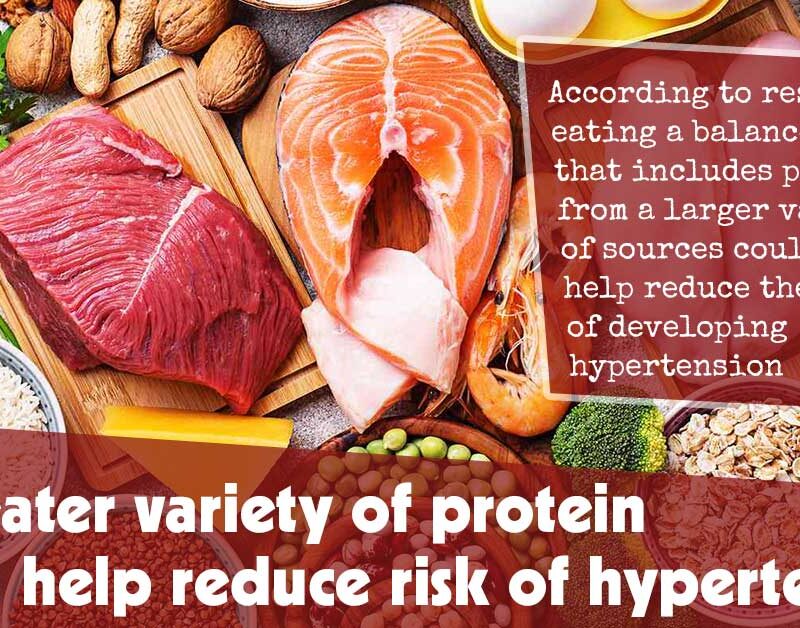Studies suggest that eating a balanced diet that incorporates proteins from multiple sources could lower the risk of hypertension.
Nearly 50 % of the population has high blood pressure, one of the key contributors to cardiovascular disease. If left untreated, hypertension damages circulation systems and can lead to stroke, heart attacks and other health problems.
Nutrition may provide an easy and effective means of combatting high blood pressure. Alongside carbohydrates and fats, protein forms one of the three basic macronutrients.
There is an inextricable link between poor diet quality and an increased risk of cardiovascular disease and its related mortality.
The American Heart Association’s 2021 Dietary Guidelines for Improving Cardiovascular Health encourage individuals to consume protein-rich diets sourced predominantly from plants, with low-fat or fat-free dairy products and seafood being key components. If desired, unprocessed types and lean cuts of poultry or meat could also be consumed daily if desired – AHA recommends one to two servings (5.5 ounces) daily of protein consumption.
Researchers conducted analysis on health data of nearly 12,200 participants of between 2 to 7 rounds of nutrition surveys held every 2 to 4 years, with each initial survey serving as a baseline and subsequent rounds as follow-up measurements.
Dietary intake was assessed through household food inventories and 3 consecutive 24-hour recalls conducted over 3 days within each survey round, to measure diet. 24h recall information was gathered over multiple days during one week at each survey round.
Individuals received a protein variety score based on how many distinct protein sources they consumed out of 8. These sources included legumes, refined grains, whole grains, fish, unprocessed red meat (non-processed red meat), processed red meat (processed red meat), eggs and poultry.
Points were awarded for each protein source, with an upper limit variety score of 8. The relationship between new-onset high blood pressure and protein variety score was then evaluated.
Newly diagnosed high blood pressure was defined as having a systolic blood pressure greater than or equal to 140 mm Hg and/or diastolic blood pressure greater than or equal to 90 mm Hg, taking medication for blood pressure reduction, or having been diagnosed as having hypertension since their last survey visit; follow-up was 6 years on average.
Analysis revealed:
Over 35% of the almost 12,200 individuals under study developed new-onset high blood pressure during follow-up.
Comparative to individuals with protein consumption variety scores under 2, those with four or more variety scores experienced a 66% lower risk of hypertension.
Researchers determined a consumption amount window for each of the 8 protein sources where their high blood pressure risk decreased, and this level was defined as appropriate consumption by researchers as “proper consumption level”.
When total protein consumption was taken into consideration, eating habits were divided into five categories, from least to most consumed. Individuals who consumed the least total protein amount and those who consumed more had the highest risk for newly developing high blood pressure.
Conclusions reached include that eating a balanced diet featuring multiple protein sources rather than solely relying on one dietary protein source can help protect against hypertension development.
One limitation of the study lies in its observational design. By drawing upon existing health data, researchers couldn’t conclusively prove whether or not consumption of any quantity or type of protein prevented or caused new-onset high blood pressure.







